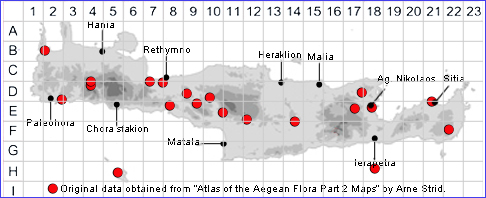SPECIES DESCRIPTION
LYTHRUM HYSSOPIFOLIA
Family and Genus:- See- LYTHRACEAE
Common Names:- Grass poly
Homotypic Synonyms:- Chabraea hyssopifolia, Hyssopifolia parviflora,
Salicaria hyssopifolia.
Meaning:- Lythrum (Gr) Gore, A name used by the Greek physician and botanist
Dioscorides, may refer to the flower colour.
Hyssopifolia (L) With hyssop-like leaves.
General description:- Glabrous, annual.
Stems:-
1) 10-30 cm, reddish, sometimes rooting at the lower nodes, with narrow ridges.
Leaves:-
1) Alternate up to 25 x 8 mm, but usually much less, usually suberect, linear to
oblong.
Flower:-
1) Solitary or paired, subsessile in leaf axils, (5-)6-merous.
2) Hypanthium, 4-6 mm, obconical in flower, cylindrical in fruit.
3) Epicalyx-segments, 1-1·5 mm, subulate, about twice as long as the sepals.
4) Sepals, deltate.
5) Petals, 2-3 mm, pink.
6) Stamens, usually 4-6, included.
7) Style, 1·5-2 mm.
Fruit:-
1) Capsule, about as long as the hypanthium.
Key features:-
1) Epicalyx-segments, at least 1 mm, subulate, longer than the sepals, erect or
patent in fruit.
2) Flowers, (5-)6-merous.
3) Stamens, (2-)4-6(-12).
4) Leaves, mostly more than 2 mm wide.
Habitat:- Coastal wetland, ditches, seasonally wet spots in agricultural areas and
by roads. 0-1100 m.
Distribution:- Throughout Greece, but rare in the interior north. - Most of Europe
except the north, Mediterranean region, Anatolia, S Russia, SW to C Asia.
Sparsely scattered across Crete. Not too common.
Flowering time:- Late Apr to July.
Photos by:- Steve Lenton

